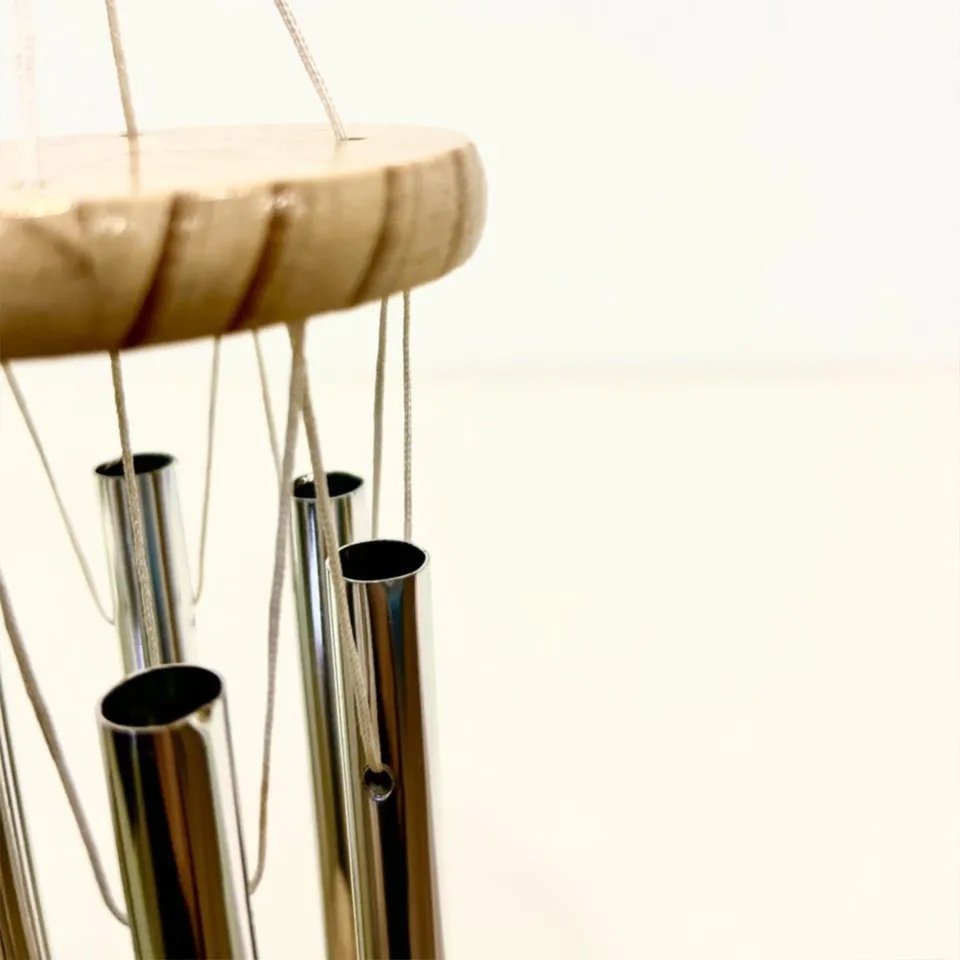Wind chimes are a type of percussion instrument made from suspended tubes, rods, bells, or other objects crafted from metal or wood. Their origins trace back to 1100 BC, when an ancient Chinese emperor cast the first bells, known as Fenglings. At the time, only members of the royal family and honored dignitaries were permitted to enjoy the heavenly luxury of musical entertainment through chimes and bells. Even today, there’s a mystical quality to wind chimes—an unspoken magic in their ability to capture the wind, harness its energy, and transform it into something meaningful.
The morning I checked on my father-in-law and discovered that he had passed away peacefully in his sleep was both heartbreaking and strangely serene. My husband, Matt, was in the shower when I gave him the news. In the hour that followed, as we waited for the Hospice nurse and the funeral home to arrive, we quietly prayed and said our final goodbyes to John.
Feeling the need to step away from the heaviness of the house, we decided to spend the day at the beach, bringing our two dogs along for comfort and company. We had a quiet, delicious lunch at Blacksmith Restaurant with a bottle of wine to toast John. After dining alfresco, we then wandered through the charming streets of Berlin. Along the way, we stopped at an antique shop where we were drawn to a set of bamboo wind chimes displayed in the window.
As it turned out, the wind chimes were from Southeast Asia, fitting, as it was the same region John had flown missions into during the Vietnam War. Of course, we brought them home. They now hang in one of John’s favorite rooms: our kitchen. He used to love sitting at the island with a glass of wine, chatting with Matt while he cooked dinner.
The wind chimes, suspended at just the right level, ring softly many times a day. Each gentle sound brings us a comforting reminder of John—and of the quiet, sacred memory of his last day on this earth.
Considered sacred objects believed to attract kind spirits, wind chimes have maintained their enchanted status throughout history. They are often thought to ward off negative energy, purify the atmosphere, and enhance the flow of positivity within a space. With each gentle sound, wind chimes are said to offer protection, balance, and a sense of peace, bridging the seen and unseen in subtle, soothing ways.
With spring in full bloom, we often find ourselves opening windows to welcome the cool, refreshing air. The gentle tinkle of wind chimes dancing in the breeze is believed to invite positive energy into the home. For centuries, these enchanting sounds have soothed our spirits, dispersing negativity and creating a sense of calm—whether we’re relaxing on the porch or enjoying a quiet moment in the garden. I’ve always loved the peaceful melody of wind chimes outside my window; it’s a small, beautiful reminder to pause and breathe. Their calming presence and energetic benefits make them more than decor—they’re a comforting companion to the rhythm of everyday life.
The healing effects of wind chimes have been recognized for a long time. Their soothing background noise from the natural breeze can help relieve stress, anxiety, and mental tiredness. The harmonious sounds can aid breathing, quiet racing thoughts, and promote relaxation. The soothing sound waves of a wind chime are great for settling down at the end of the day or before bed.
Whether bamboo or wooden wind chimes, their sound vibration and the number of their rods have a purpose. According to wind chimes Feng shui, the five rod metal wind chimes are incredibly optimistic. This wind chime benefits the five elements of nature, earth, metal, fire, wood, and water. Such wind chimes help establish synchronization between people and the elements of nature, thereby suppressing all negative energies and bad luck. The sweeter the sound a wind chime produces, the more significant the good luck it brings to the inhabitants.
Wind chimes should be hung indoors where energy is stagnant, and therefore, needs an energy cleanse. Inside bedrooms, they should be placed near the windows from which a gentle breeze blows throughout the day, producing enchanting chiming sounds that usher in positivity and peace. Bamboo wind chimes are popular bedroom choices, their soothing effects help fight insomnia and stress.
Wind chimes are more than just an attractive piece of home decor. “Chi” in the word chime stands for positive energy as per Feng Shui. After seeing them in friends’ homes, I bought my first Capiz shell wind chime while living in Hawaii. With louvered windows and the trade winds blowing, the Capiz shells made such a magical sound. Many people believe that Capiz shells are symbols of good luck and prosperity. It is also thought that Capiz shells bring balance between the physical and spiritual worlds.
Tones have a healing effect on our bodies, calm our minds, and awaken our spirits. The resonance and vibration of sound releases stress and emotional blockages in the body. Sound connects us with our environment, nature is never silent. Sound stimulation can nurture behavioral changes and emotions. Positive sound can ease the feeling of loneliness and isolation. The gentle sound of wind chimes can greatly help to create positive energy. Wind chimes can correct negative, harsh, or dulling sounds in the environment such as the sound of traffic.
Wind chimes help enhance the mind/body/spirit connection bringing us a sense of peace and well being.
Kate Emery General is a retired chef/restaurant owner who was born and raised in Casper, Wyoming. Kate loves her grandchildren, knitting, and watercolor painting. Kate and her husband, Matt are longtime residents of Cambridge’s West End where they enjoy swimming and bicycling.


